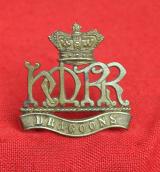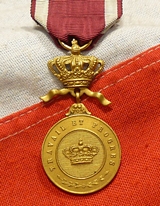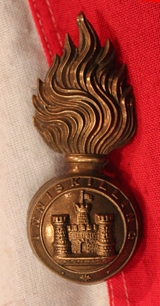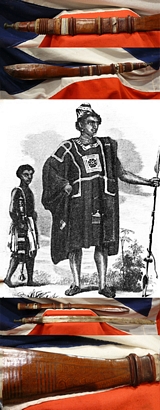Antique Arms & Militaria
An Antique 'Claw and Feather' Bronze Paper Knife or a “Unicorn” Page Turner.
Originally classified in the collecting world as a late Victorian page turner, yet in fact it may well not be a mythical collectible, or so-called ‘unicorn piece’, but thus actually a rare form of paper knife.
A most interesting piece for the bibliophile. In colour patinated bronze, possibly Austrian. Circa late 1800’s. 9.5 inches long.
Uncut pages were common to Victorian Era and earlier books, artifacts of the bookbinding practices of the day. As Spellerberg explains in Reading & Writing Accessories, long sheets of paper were folded numerous times to form a “signature” of pages or “leaves,” which would be printed on both sides. Signatures would be printed, collated, and then bound (which usually meant “sewn”) to create a book. “Most of the leaves were cut during the binding process,” he writes. “However, since all books were bound by hand at that time, leaves were sometimes left uncut and could not be opened unless they were cut.” Paper-knives made such books readable.
It wasn’t just books that required paper-knives to be read, which is why the tools came in all sizes. There were long ones for newspapers and magazines, as well as shorter ones for diminutive books made to fit in the palm of the hand. Regardless of their size, some were painted in handsome designs while others were carved and fitted with sterling-silver handles, transforming these prosaic implements of paper destruction into small works of art. And, of course, a great many paper-knives were treated as handheld advertisements, sold at tourist destinations as souvenirs or given away by companies wishing to extend their brands, as we might put it today.
Impossibly so, as it turns out: After researching the topic for several years, Spellerberg concluded that page turners simply did not exist during the Victorian Era. In fact, according to Spellerberg, page turners didn’t exist during any historical period at all, making them the unicorns, if you will, of office collectibles, mythical objects that tell us more about how we imagine people lived rather than how they actually did.
Page turners, then, were actually paper-knives, and paper-knives were the tools readers employed to get at the content inside an “unopened” book.
Matthew Haley of Bonhams, stated. “I was once told, but have never confirmed, that people still occasionally request books that have never been opened at the Bodleian Libraries in Oxford,” Haley says. “They are lent a paper-knife for the purposes of cutting the pages.” In fact, as Rosie Burke of the Bodelian told me via email, “I’m pleased to confirm that it is true that after all these years we still have many books with uncut pages—either completely uncut or only partially cut. Staff will issue paper-knives to readers for certain books, but anything that is particularly old or fragile will only be cut by either reading-room staff or a member of our conservation team.”
This is obviously good news for readers—as a library, the Bodelian is in the business of spreading knowledge rather than keeping it secreted within the uncut pages of the books on its shelves. But the utility of paper-knives raises an interesting dilemma for book collectors. Is a book with uncut pages more valuable than a comparable volume whose leaves have been sundered, however carefully, by a paper-knife?
“Generally speaking,” Haley says, “there is a slight premium placed by collectors on uncut or ‘unopened’ copies, as they are closer to how the book would have been originally supplied by the bookseller. It’s one of the fascinating ironies of book collecting,” he adds, “that an unreadable book could be worth more than one that’s ready to read.”
Some years ago we had an early edition of Darwin’s ‘On the Origin of Species’ from Winston Churchill’s personal library, and many pages were still uncut, which demonstrates that despite being an early edition from the mid 19th century it had neither been read or even cut by Spencer Churchill or Winston Churchill during their ownership read more
220.00 GBP
Edward VIIth 20th Hussars Cap Badge, Used in WW1
The regiment was not deployed to South Africa until December 1901 for service in the Second Boer War and therefore only took part in the final drives against the Boer commandos in spring 1902. The regiment was based in Ireland again from 1908 to 1911.
The regiment, which was based in Colchester at the start of the First World War, landed in France as part of the 5th Cavalry Brigade in the 2nd Cavalry Division in August 1914 for service on the First World War. The regiment saw action at the Battle of Mons in August 1914 and both the First Battle of the Marne and the First Battle of the Aisne in September 1914. It went on fight at the First Battle of Ypres in October 1914, the Battle of Arras in April 1917 and the Battle of Cambrai in November 1917. It later took part in the German Spring Offensive in 1918, the Battle of Amiens in August 1918 and the final push as the war drew to a close read more
65.00 GBP
Antique Persian Carved Bone Hilted Kindjal Short Sword
18th to Early 19th Century. The blade has traces of a complex etched design, possibly including some Islamic script. Carved bone hilt with single silver leaf d?cor and a nail mounting stud. Old cracking to hilt and overall russetting to the old blade. Overall 201/4 inches long read more
195.00 GBP
A Fine Bladed Indonesian Keris, Nickel Iron Meteoric Blade
19th Century Keris Dagger/Sword, but the blade may be far older. This Indonesian ceremonial dagger or Keris is believed to date from the 1800's based on the style, materials and condition of the steel. The handle made of wood indigenous to Java, appears to be from the 19th century. As the keris is handed down from generation to generation (sometimes over centuries), the wooden handle and scabbard are often replaced with the blade remaining original. Used in cultural ceremonies and traditionally worn as a symbol of status, the Keris is an important cultural item in Indonesian and Malaysian cultures. This particular example is done in the dapur bener (straight blade) style, and was hand forged with alternating laminations of so-called iron and meteoric nickel-rich iron. As a historic item that the blade can bu up to 300 years old or more, there is some rust and pitting in parts on the blade. However, the unique patterns of nickel in the steel are very visible on the blade and the edges are still quite sharp.
Painting in the Royal Collection by Frans Francken the Younger in the gallery, photo 10, painted in 1617, titled 'Cabinet of a Collector', clearly shows, top left, a 16th century Kris dagger, Even as early as the 16th century, awareness and collectability of the Indonesian kris had reached far into Europe.
The kris or keris is a distinctive, asymmetrical dagger from Indonesia. Both weapon and spiritual object, the kris is considered to possess magical powers. The earliest known kris go back to the tenth century and most probably spread from the island of Java throughout South-East Asia.
Kris blades are usually narrow with a wide, asymmetrical base. The sheath is often made from wood, though examples from ivory, even gold, abound. A kris’ aesthetic value covers the dhapur (the form and design of the blade, with some 40 variants), the pamor (the pattern of metal alloy decoration on the blade, with approximately 120 variants), and tangguh referring to the age and origin of a kris. A bladesmith, or empu, makes the blade in layers of different iron ores and meteorite nickel. In high quality kris blades, the metal is folded dozens or hundreds of times and handled with the utmost precision. Empus are highly respected craftsmen with additional knowledge in literature, history and occult sciences.
Kris were worn everyday and at special ceremonies, and heirloom blades are handed down through successive generations. Both men and women wear them. A rich spirituality and mythology developed around this dagger. Kris are used for display, as talismans with magical powers, weapons, sanctified heirlooms, auxiliary equipment for court soldiers, accessories for ceremonial dress, an indicator of social status, a symbol of heroism, etc
No scabbard read more
345.00 GBP
A Most Scarce Victorian Boer War Cap Badge of Her Majesty's Reserve Regiment of Dragoons
Used for only two years in service from 1900. Brass with intertwined initials, 'HMRR', above a scroll bearing the title, 'Dragoons'. Two lugs on reverse. The regiments were all disbanded in 1902 at the end of the Boer War.
A whole series of reserve regiments were raised during the Boer War (1899-1902). They were formed as a result of Army Orders issued in 1900 and consisted of men on the Reserve who could sign up. They were used for Garrison duties in Great Britain and were not liable for service overseas. These units were separate from the Volunteers, and Imperial Yeomanry which had also been raised at the same time.
The regiments were organised to follow elements of the regimental system. They included the Reserve Regiment of Dragoons, Lancers, Hussars, Royal Rifles Reserve Regiment and regional regiments such as the Royal Southern Reserve Regiment. There was also a Royal Guards Reserve Regiment, but this used the cap badges of the parent regiments, rather than bespoke badges which were introduced for the other regiments. read more
110.00 GBP
An Original Ancient 13th Century, Crusader Knight's Iron Battle Mace & Scorpion Head
Pineapple shaped head with large mounting hole. The type as were also used as a Flail Mace, with the centre mount being filled with lead and a chain mounted hook, when it was not mounted on a haft, as this mace is. Flattened pyramidical protuberances, possibly English or East European. Made for a mounted Knight in the era of the Crusades, to use as an Armour and Helmet Crusher in mortal combat. Although made in the 1200's it would have been continually used up to the 15th to 16th century. On a Flail it had the name of a Scorpion in England or France, or sometimes a Battle-Whip. It was also wryly known as a 'Holy Water Sprinkler'. King John The Ist of Bohemia used exactly such a weapon, as he was blind, and the act of 'Flailing the Mace' meant that his lack of site was no huge disadvantage in close combat. Although blind he was a valiant and the bravest of the Warrior Kings, who perished at the Battle of Crecy against the English in 1346. On the day he was slain he instructed his Knights [both friends and companions] to lead him to the very centre of battle, so he may strike at least one blow against his enemies. His Knights tied their horses to his, so the King would not be separated from them in the press, and they rode together into the thick of battle, where King John managed to strike not one but at least four noble blows. The following day of the battle, the horses and the fallen knights were found all about the body of their most noble King, all still tied to his steed. read more
875.00 GBP
A Beautiful & Very Fine Quality Gilt Early Belgian Order of the Crown, Gold Medal, For The Liberation of Belgium From the Nazi Occupation
In gilt bronze and excellent condition. The Order may also be bestowed to foreign nationals and is frequently awarded to military and diplomatic personnel of other countries stationed in (or providing support to) Belgium. During the Second World War, the Order of the Crown was extensively authorized for award to Allied military personnel who had helped to liberate Belgium from the occupation forces of Nazi Germany.
The Order of the Crown is awarded by royal decree.
The Order was established on October 15, 1897 by King Leopold II in his capacity as ruler of the Congo Free State. The order was first intended to recognize heroic deeds and distinguished service achieved for service in the Congo Free State. In 1908, the Order of the Crown was made a national honour of Belgium, junior to the Order of Leopold.
read more
95.00 GBP
A Victorian 1881 Inniskilling Fusiliers Busby Helmet Grenade
In October 1899 war broke out between the United Kingdom and the Boer Republics. The 1st Battalion landed at Durban, where they became part of the 5th (Irish) Brigade. The battalion was involved in a series of military reverses at the hands of the Boers that became known as the "Black Week", culminating in defeat at the Battle of Colenso. The unit subsequently took part in the Tugela Campaign before helping relieve Ladysmith in early 1900. The regiment lent its name to "Inniskilling Hill", which was taken by the 5th brigade on 24/25 February 1900. In 1914 the Great War broke out and the 2nd Battalion was first to see action in the Battle of Le Cateau. The 1st Battalion participated in the Landing at Cape Helles on the Gallipoli peninsula in April 1915 with the 29th Division. There were also nine New Army battalions raised seeing service with the 10th (Irish) Division, the 16th (Irish) Division and the 36th (Ulster) Division on the Western Front and at Gallipoli, the Macedonian Campaign and Palestine. read more
85.00 GBP
A South American Sorocabana Knife 'Faca De Ponta’ of the South American Cowboys
"Sorocabana knife". It was the knife used by the bandeirantes of Sao Paulo and by the tropeiros who traveled between the south and southeast regions. Made from an imported blade from Gebruder Weyersberg Solingen. Gilt decorated makers panel. Carved ebony hilt In the southern region of Brazil , "tropeiro" was the conductor of mules troops from the city of Viamao, Rio Grande do Sul, to Sorocaba, Sao Paulo. These troops supplied the gold cycle in Minas Gerais in the eighteenth century. This activity was responsible for the founding of countless cities in the states of Rio Grande do Sul, Santa Catarina and Parana. Before the railways, and long before the trucks, merchandise trade was done by drovers in regions where there were no alternatives for sea or river navigation for distribution.
The interior regions, far from the coast, depended for a long time on this mode of transportation by mules . Since the end of the seventeenth century, mining works, for example, required the formation of groups of merchants in the domestic trade. Initially called men of the way, traffickers or passers-by, the tropeiros became fundamental in the trade of slaves , food and tools of the miners.
Far from being specialized merchants, the tropeiros bought and sold of everything a little: slaves, tools, clothes, etc. The existence of Tropeirismo was intimately related to the coming and going of roads and highways, especially the Estrada Real - road through which Minas Gerais gold arrived at the port of Rio de Janeiro and followed to Portugal . read more
285.00 GBP
Antique Mandingo Chieftain's Slave and Gold Trader Sword With Tattoo'd Leather Scabbard
A chieftain's weapon of Mandingo slave and gold traders. The Manding (Mandingo) are West African people. Their traditional sword for the slave traders comprises a sabre like blade, guardless leather grip and scabbard with exquisite leather work. This example is a long sized example, of a high ranking Mandingo, of very nice quality and finely tattooed. 25 inches long curved blade, leather grip and leather scabbard with leaf shaped widening tip, entirely tooled tattooed and decorated. Of special interest is the finely bound and decorated leather work. These weapons are well known for their leather-work and the tattooing applied to the leather of the scabbards. The iron work skills are less well developed. Many blades are taken from European weapons such as sabres and cutlasses.
While the Baule are a distinct tribal group to the west, it is important to observe that Malinke is a variant term applied to the Mandingo (also Manding, Mandin, Mande).
In general, these remain primarily considered Mandingo weapons, and from regions in Mali. These were of course invariably mounted with European sabre blades. Mandingo Tribe (also known as the Mandinka, Mande, or the Malinke Tribes) were the traders of the African West Coast, trading primarily in gold and slaves from other African tribes. The blades comes out a little from the chape. Small areas of leather separation on the scabbard binding. Picture in the gallery of an 1850's engraving of a Mandingo Chief and his sword bearer. read more
395.00 GBP











